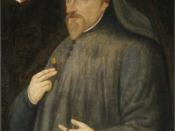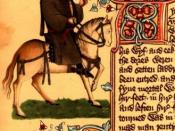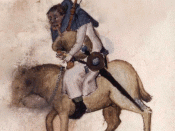How are the ironies, contrasts, and parallels under the constraints of Fabliaux different in The Merchant?s Tale to those in The Miller?s and The Reeve?s Tales in The Canterbury Tales In one sense Chaucer?s comic tales, his fabliaux can seem like a well-intentioned respite from his tales of courtly love and religion. Indeed the placing of The Miller?s and the Reeve?s Tale seem to confer this viewpoint. After the gravity of the Knight?s narrative, Chaucer urges us to convene with him into looking into the rather more base and bawdy side of human existence. Chaucer?s artistic aim in the writing of the tales was one of great magnitude. He aimed at attributing appropriate tales to the complete spectrum of profession and character and then providing theses personas with typical narrative styles. Chaucer?s achievement in constructing these fabliaux again must not be understated because until his attempts, the fabliaux was almost completely unseen in the English language.
The construction of three fabliaux will be discussed; The Miller?s, The Reeve?s, The Merchant?s Tales all remain fairly similar in their basic construction. None of the secular narrators turn themselves to religion to any real extent and their concern seems far from high spirituality. The profane, one half of Chaucer?s double purpose in his narrative takes precedence over the sacred. The essence of the genre more often than not involves the comic deception of a husband, an authoritative figure in Chaucer?s time by a younger man who has been invited into the scenario by the husband himself. All three tales are played out within restricted settings and narrated as if they were in the present tense, then usually the culmination occurs in a space within a space, such as the bath tubs within the house in The Millar?s Tale. The differences that lie between...


